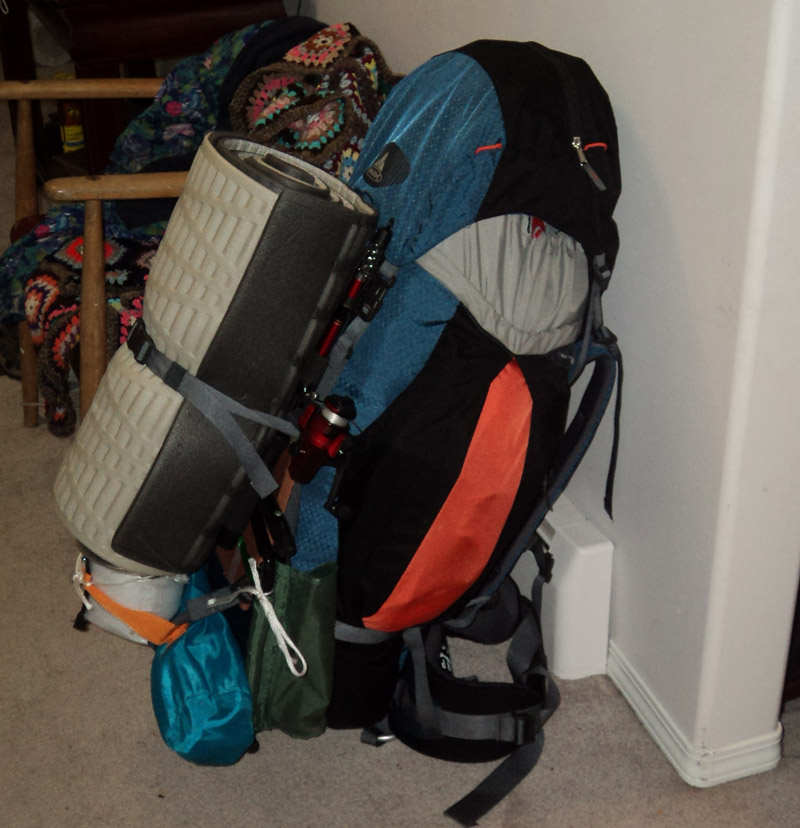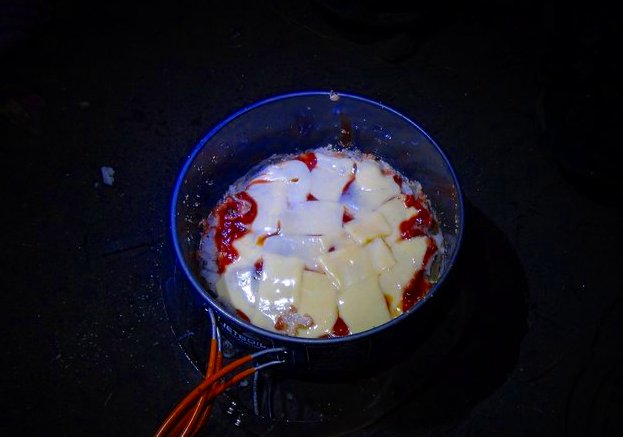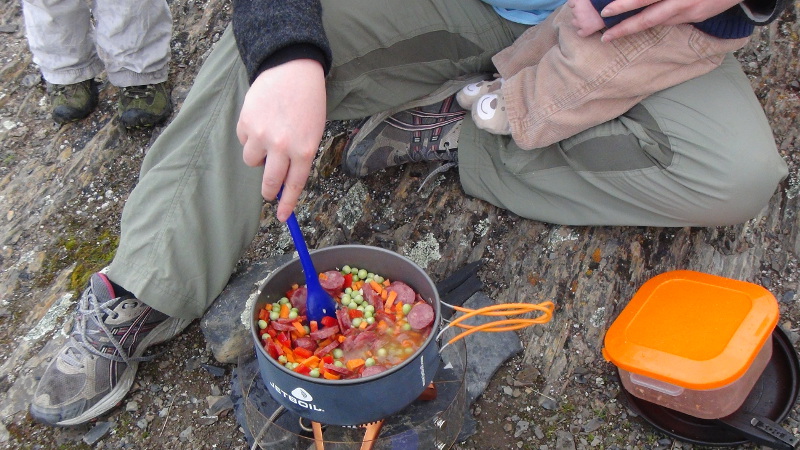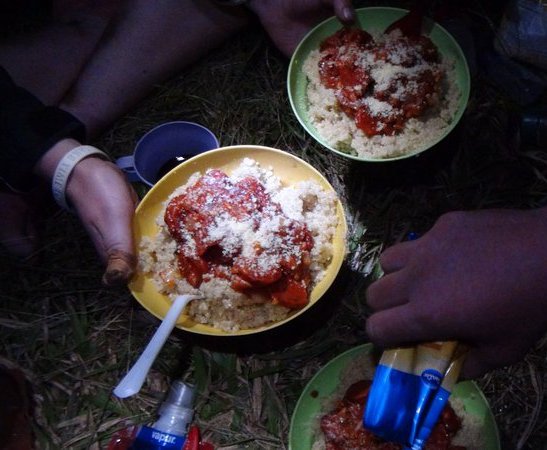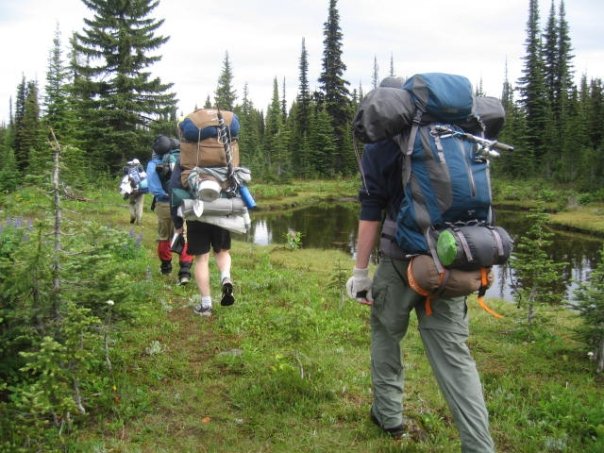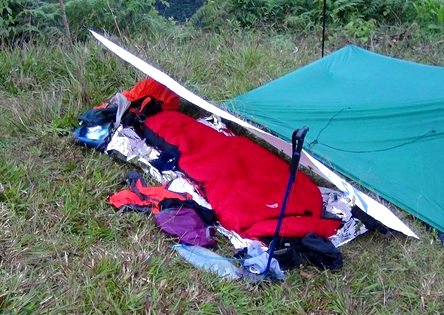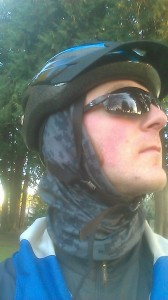Backpacking with a family presents a conundrum. Even if one has an ultralight philosophy it still results in heavy loads. One has to cut down on weight as much as possible, but still ends up carrying all of the gear for (in our case) 4 kids. This means that an UL backpack just won’t cut it. Because of that, when I was shopping for a backpack a couple years ago I opted for the Vaude Astra II: a 65 liter backpack that is built for hauling weight comfortably.
An example of how the weight adds up was on a father-daughter backpacking trip with my almost 5-year-old daughter. It was her first 3-day backcountry backpacking trip so I had to make sure I had everything and more to make her comfortable… and want to go backpacking again. Sure, she had a daypack with snacks in, but I had all the meals, more snacks, fuel, sleeping pads, survival gear, first aid kit, tent, sleeping bags, more food, lots of extra clothes, bear spray, cordage, fishing rod, most of the water, etc., etc., etc… oh, and 2 small, collapsible chairs. My pack weighed much more than the others we went with, despite the fact that I packed my golite tent, UL closed cell foam pads and mini alcohol stove. Weight was a guarantee, but the Vaude Astra II made it as comfortable as one could be lugging around everything minus the kitchen sink.
The Astra II is a highly padded and adjustable pack. It uses a heavy duty velcro system for adjusting the torso size from small up to an XL. It uses a sturdy internal frame and ample padding to make one happier about the fact they are carrying a lot of weight.
The back padding is not only comfortable but breathes very well. There’s a ton of space for ventilation so you stay cool when you’re lugging all that extra gear.
The 55 + 10 is a reference to its ability to hold 55 liters in the main pack and an extra 10 in the lid. The lid itself can be removed, but it leaves a 5 inch tall flap of fabric to flap in the wind.
Almost everything is easy access in this pack. First off, there’s a separate sleeping bag compartment that opens from both the outside and inside. On the back of the pack there’s also a double zipper that starts at the top and unzips all the way down to the sleeping bag compartment allowing access to everything inside the pack. Underneath the removable lid there’s a cinch to close the main pack for extra security and for when you don’t take the lid with you.
There are two very large side pockets with zips. I can fit my Vaude Ice Peak 150 sleeping bag in one side with room to spare. Below the side zip pockets there are elastic pockets that can fit smaller items. The downside is that once you fill up the zip pockets it’s almost impossible to get items in and out of the elastic pockets below.
There are plenty of straps to cinch down the pack for carrying smaller loads and attach stuff to the outside of the pack, but honestly the I feel the straps are too long and a bit too heavy duty. You could cut a couple ounces off the weight if you shortened them and used lighter duty webbing and buckles. On the back there are loops for trekking poles and/or ice axes as well.
One more thing. On the bottom of the pack there’s a pocket for the built-in rain cover. The more dexterous among us can even take it out and put it on the pack without even taking the pack off. It connects inside the pocket with a snap, but can be completely removed if one so desires. My pack came with a high visibility orange cover which would be useful for signalling in an emergency.
For versatility and heavier loads, the Astra II by Vaude is a good pack that provides capacity and comfort. I continue to use it for family trips and it’s sturdy enough that I don’t have to worry about lending it to friends.
Pros
- Comfortable
- Highly adjustable
- Included rain cover
- high capacity
- carries heavy loads
- Easy Access
- Hydration compatible
Cons
- Heavy (4 lbs 15 ounces avg)
- Webbing (straps) are too long
- Elastic Side Pockets are hard to access when side zip pockets are used
- No hip belt pockets
The Vaude Astra II hasa MSRP of $199.95, but can be purchased at the Sierra Trading Post for $129.95.
 The Outdoor Adventure Giving you tips, tricks & recommendations to help make adventuring in the Outdoors fun, safe & exciting for you and your kids.
The Outdoor Adventure Giving you tips, tricks & recommendations to help make adventuring in the Outdoors fun, safe & exciting for you and your kids.
